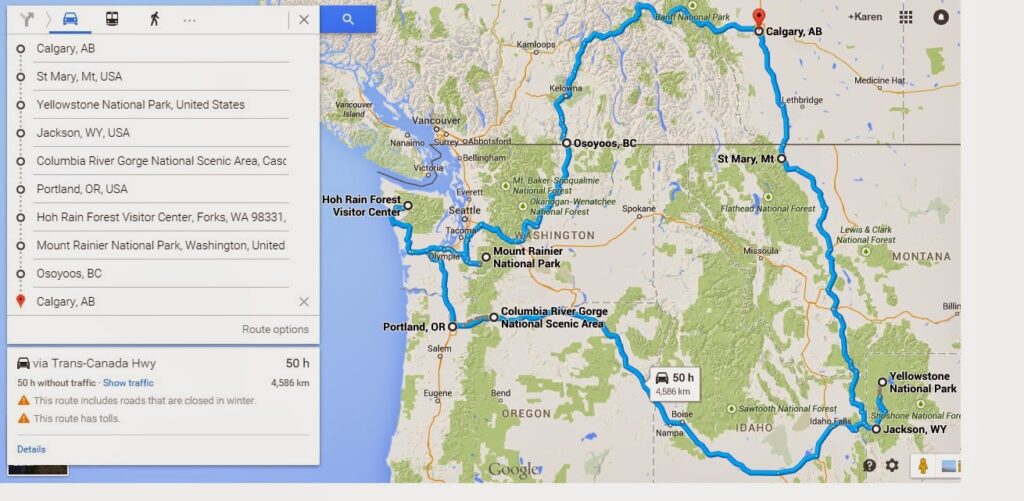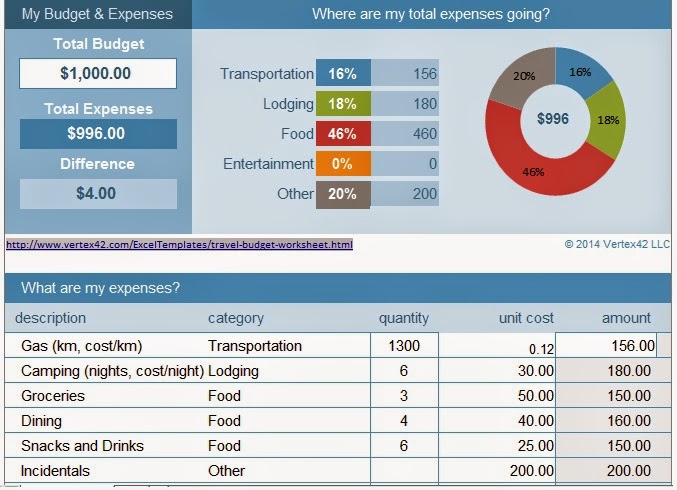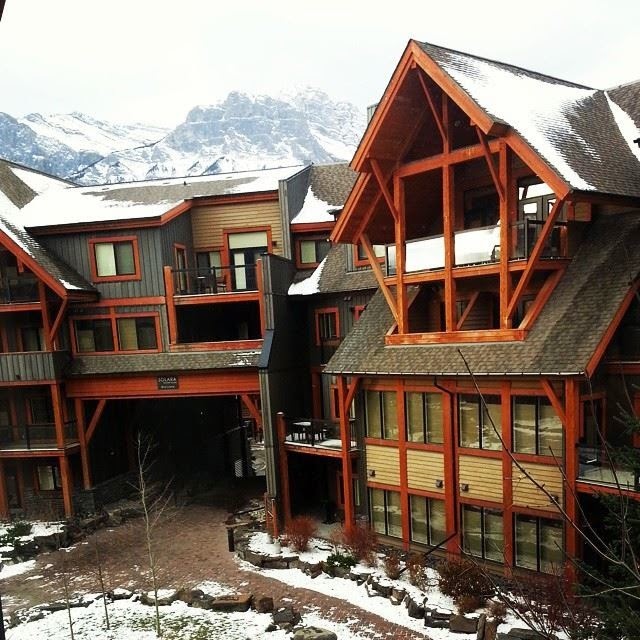 |
| A Truly Epic Road Trip |
Table of Contents
Epic Road Trip Planning: Budgeting
- Select a budgeting tool to record your expected expenses in. An Excel worksheet works well for your initial budget. Vertex42 has a template that allows you to enter your starting amount, enter your expenses, and see how much you have left. For tracking expenses on the go, a free app such as Concur (for Android or iPhone) or Expensify (for iPhone) is convenient.
- Determine a reasonable total dollar amount to spend on the trip. If you have $1,000 in the vacation account, start with $800 (80% of what you have to spend).
- Enter all “fixed” costs you can anticipate such as lodging, park fees, and tourist attraction admission fees. If you do not know exactly where you will be staying, enter the average price of a campsite/hotel in the area and multiply it by the number of nights you are planning to stay.
- Estimate the cost of fuel. To get an estimate on gas, use Google maps to calculate the distance you will cover (kilometres or miles), then divide it by your typical mileage (km/L or mpg) and multiply by the price of gas (per litre or gallon). e.g. (3,500 km / 10 km/L) x $1/L = $350.
- Expect food to be a major part of the budget; it is the biggest expense if camping, and the second biggest expense if staying in motels. For an estimation on groceries, prorate your monthly grocery bill to the length of your trip and round up. If you will be eating out most of the time, set a budget that is in line with the type of dining you would like. For family restaurants and fast food, you can get away with $5-10/person for breakfast, $10-20 per person for lunch, and $10-30 per person for dinner. Allow extra for a special meal here and there.
- Pad the budget. Gas and groceries typically cost more in small towns, so expect to pay more. Where you entered $1/L for gas, change it to $1.30. Add 10% or more for taxes if you are going to a province/state that has a higher sales tax.
- Allow for incidentals. Add a fat, juicy “Other” line to your budget and give it a generous allowance. You never know what random costs will come up: It’s pouring rain, your kids are super sick, and you need to stay in a hotel to dry off and warm up; your daughter needs new hiking boots thanks to her sudden, massive growth spurt. You never know when you will need to spend a little extra.
- When you are saving for your trip, put aside a contingency fund. This money should be easily accessible and available at short notice, but only used in case of emergency (car repairs, a new sleeping bag because the dog ate it). A credit card with room available works too, but going into debt will jeopardize future epic road trips, so I don’t recommend it.
- Consider trip insurance & review medical benefits. If there were a medical emergency on your trip, could you afford to fly everyone home or would their flights be covered by your insurance provider?
Putting It All Together
 |
| Sample Travel Budget Using Vertex42’s Travel Budget Template |
Note that I changed the template’s unit cost for gas from $0.56/mile to $0.12/km (assuming mileage of 10.2 km/L and gas price of $1.20/L).
Money Saving Tips
Camping
- Go mid-week if possible so you do not need to make a reservation and pay a booking fee (At provincial campgrounds, the booking fee is almost half as much as a night’s stay!).
- Share a site if allowed. Alternately, book a double site (often cheaper than two separate sites) or group campsite if you wish to camp with many families.
- Bring as much of your own food as you reasonably can since groceries in small towns can be expensive. Also, if you have dietary restrictions, it may be difficult to find certain items.
 |
| A sunny site at Firerock Campground, Cypress Hills Interprovincial Park |
- Gas Buddy, available for Android or iPhone, is a helpful, free app that can show you where the lowest gas in town is.
Motels / B&Bs / Hostels / Vacation Rentals
- Look for lodging that provides free breakfast or has a kitchenette so you can make your own meals.
- Share a cabin, condo, hostel, or hotel/motel room with friends.
- Many vacation rentals have 2-bedroom units that are far less expensive hotels/motels.
- Consider a private/family room at a hostel! In Lake Louise, most hotels are over $200/night, but a family room at the HI-Lake Louise hostel is only $100.
Solara Resort & Spa, Canmore has luxurious 1 & 2-bedroom suites
Park Passes
- If you will be staying in national parks for 7 days or more, or will be staying in several national parks over the duration of your trip, purchase an Annual National Park Pass. A family pass in Canada is currently $136.40 (versus $19.60 per day). Save 7% by purchasing your pass from your local CAA if you are a member. AAA also provides a discount on park passes.
Epic road trips should be about creating memories, not epic debt. With some planning, and a few helpful apps, you can manage trip costs and focus on the fun. How do you manage expenses on the road?
The complete Epic Road Trip Planning series may be found here:
Part 1: Vehicle Check
Part 2: Budgeting Tools & Tips
Part 3: Embrace the Journey
Part 4: Deciding Where to Stay
Part 5: The Ultimate Car Camping Pack List
Links
American Automobile Association (AAA): www.aaa.com
Canadian Automobile Association (CAA): www.caa.ca
Concur App: play.google.com/store/apps/details?id=com.concur.breeze&hl=en
Epic Road Trip Planning Part 1: Vehicle Check: www.playoutsideguide.com/2015/02/epic-road-trip-planning-part-1-vehicle.html
Expensify App: itunes.apple.com/us/app/expensify-expense-reports/id471713959?mt=8
Gas Buddy App: www.gasbuddy.com/GasBuddyMobileApps.aspx
Seven Best Apps for Tracking Business Expenses: www.americanexpress.com/us/small-business/openforum/articles/7-best-apps-for-tracking-business-expenses/
Travel Budget Template: www.vertex42.com/Files/download2/themed.php?file=travel-budget.xlsx


